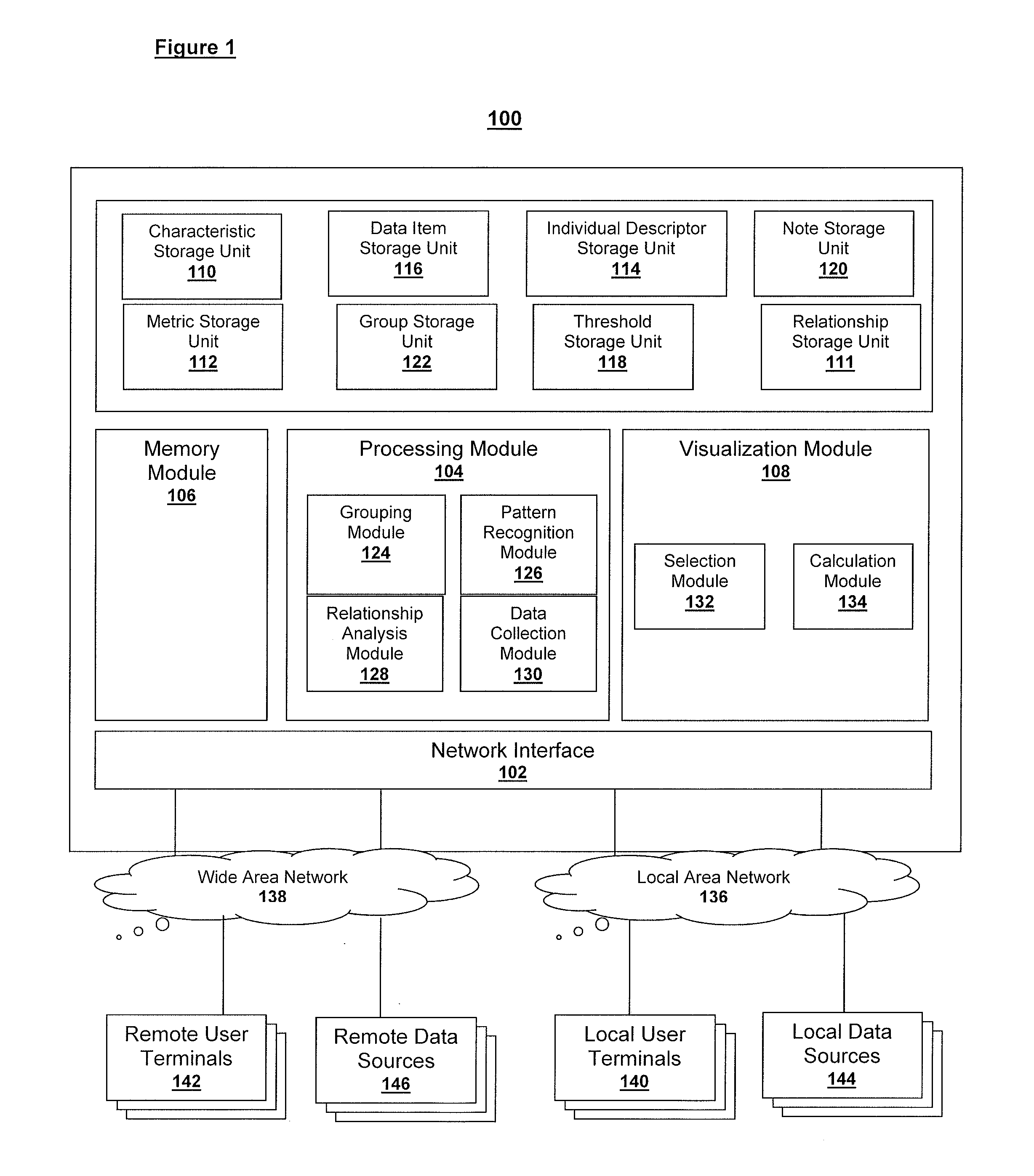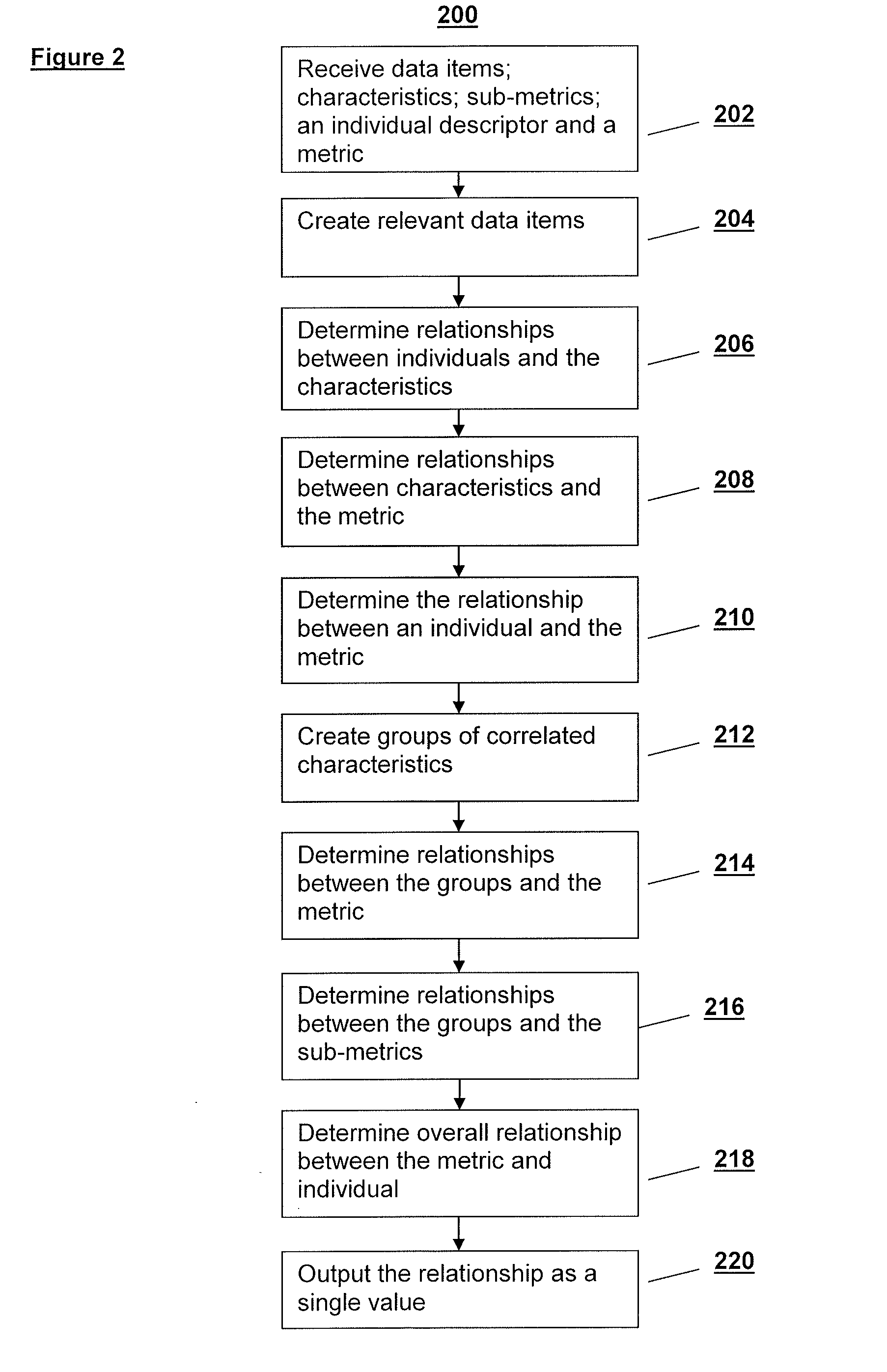Tools and methods for determining relationship values
a relationship value and relationship value technology, applied in the field of characteristic-based profiling systems, can solve the problems of general outdated and inaccurate customer profiles created by these approaches, not reflecting the myriad similarities of profiles, and failing to reflect the various degrees of granularity
- Summary
- Abstract
- Description
- Claims
- Application Information
AI Technical Summary
Benefits of technology
Problems solved by technology
Method used
Image
Examples
second embodiment
[0087]In a second embodiment, the disclosed system may be used to identify a specific course of conduct to take when communicating with a specific donor group, such as whether to use physical or electronic mail. This may further enable organizations to identify the best time the day, week, month, or year to solicit donations from donors. For example, the disclosed system may determine a relationship between certain characteristics (e.g., communication preference, motivational factors, etc.) and the donors. This information may allow the organization to not only identify when to solicit donations, but also how to present the solicitation (e.g., what purpose is likely to elicit the most donations or what reward most influences those donors.)
[0088]In a similar embodiment, the disclosed system may allow organizations to identify the most cost-effective method, or the potentially most effective communication method, of reaching a donor with its message at a specific moment in time. For e...
third embodiment
[0089]In a third embodiment, the disclosed system may notify the organization to solicit donations at an opportune moment in time. For example, based on characteristics that indicate a donor is likely to donate more or less at certain times (e.g., donors give more during moments of success, happiness, grief, or sympathy), the disclosed system may identify individuals or groups of individuals who have a relationship with those characteristics. In this manner, the disclosed system may identify individuals or groups of individuals who are, for example, likely to donate (or increase donations) during moments of success or grief. Thus, should an event occur that could have an emotional impact on that group of individuals (e.g., a child's graduation, defeating a life-threatening illness, or a major natural disaster in a remote part of the world), the system may notify the organization to promptly solicit donations from those individuals.
[0090]This embodiment is not limited to the example ...
fourth embodiment
[0091]In a fourth embodiment, the disclosed system may enable organizations to increase donations by identifying and supporting causes important to its existing donors. For example, the disclosed system may reveal to the organization that its existing donors are sympathetic towards struggling military families. As a result, the nonprofit may increase donation amounts—or reduce donor attrition—by highlighting its efforts to support charitable services for military families.
PUM
 Login to View More
Login to View More Abstract
Description
Claims
Application Information
 Login to View More
Login to View More - R&D
- Intellectual Property
- Life Sciences
- Materials
- Tech Scout
- Unparalleled Data Quality
- Higher Quality Content
- 60% Fewer Hallucinations
Browse by: Latest US Patents, China's latest patents, Technical Efficacy Thesaurus, Application Domain, Technology Topic, Popular Technical Reports.
© 2025 PatSnap. All rights reserved.Legal|Privacy policy|Modern Slavery Act Transparency Statement|Sitemap|About US| Contact US: help@patsnap.com



